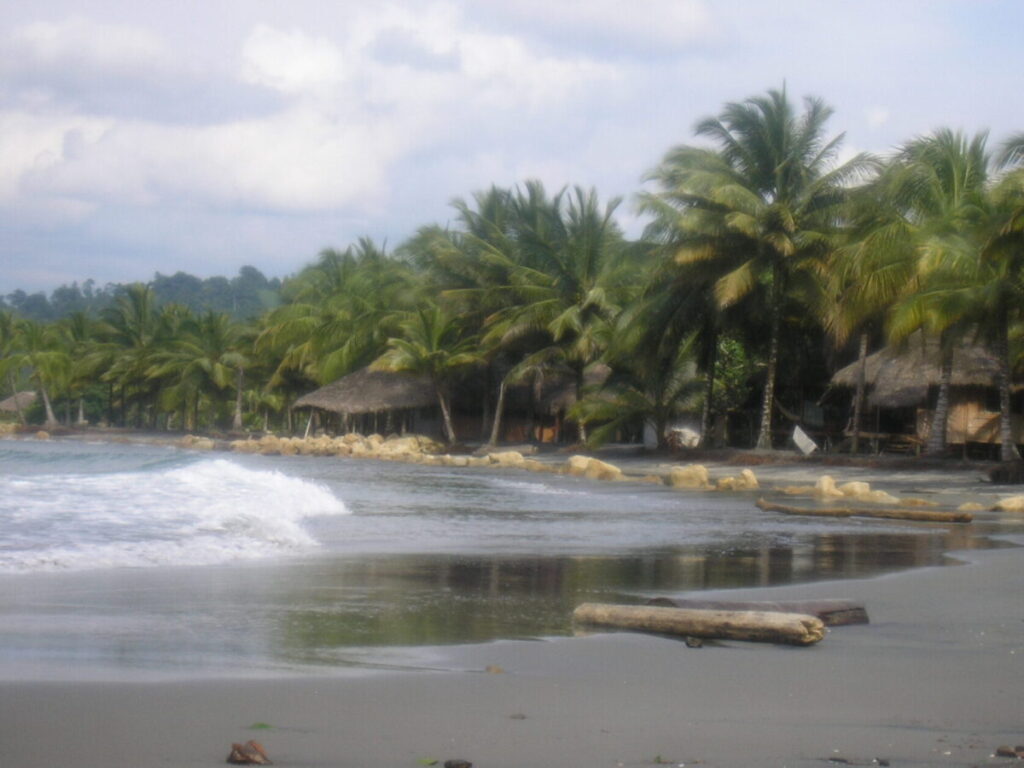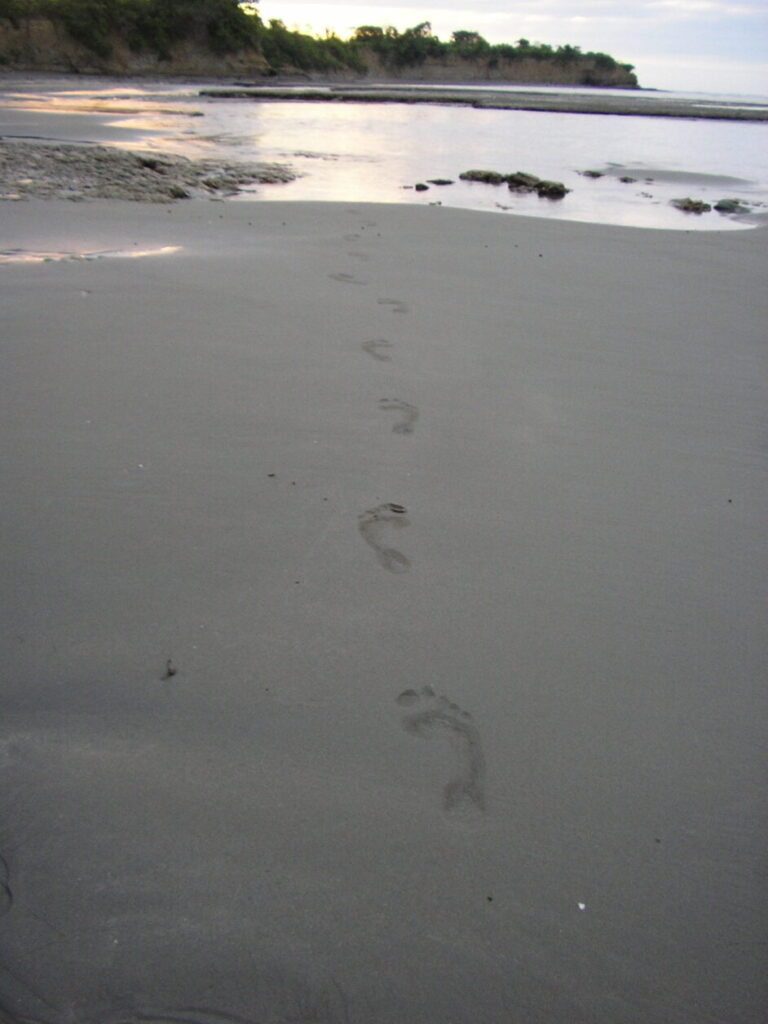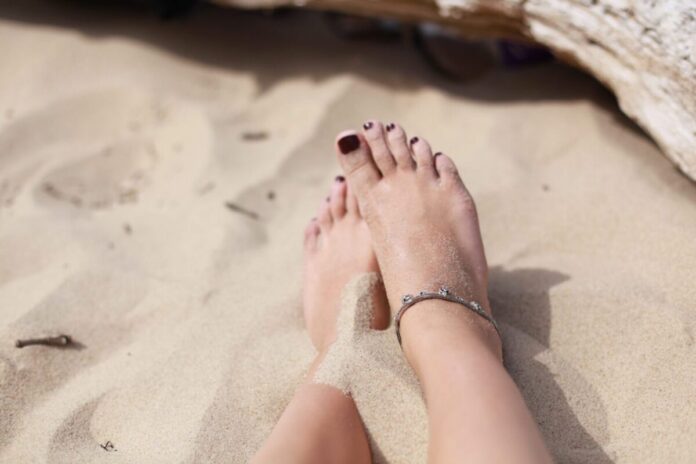So…Annette had to bring up my foot parasite experience in her bio. It wasn’t even any big deal really, but she’s like, “You have to tell the story of the foot parasite thing.” So, I figured I might as well. But, then I started thinking of all the other (more interesting) parasite stories I have from my time in Ecuador. And some of my friends’ stories, as well. So, I decided to make it broader. A series of mini-stories, if you will. A mini-series of stories. Something like that. This is the first chapter in:
Your Guide to the Parasites of South America

photo: Lisa Riley
by Lisa Riley
(From personal experience. None of this is scientific.)
La Nigua
(Preface: I heard about this parasite called una nigua while living in Ecuador. I cannot find any reference for it online, and the Spanish-to-English translation (chigger) is not at all correct for what I’m going to describe. With more than a decade separating myself from this particular memory, it is possible that I am mischaracterizing the Spanish colloquialism. Also, I never saw the word written, so I have spelled it phonetically, to the best of my ability.)
I lived one summer in Ecuador, just for fun. That is to say, I lived a lot of winters in Ecuador, working, but one summer I went and lived in a hostel on the beach with a Peruvian boyfriend. He was a chef at the hostel, and I played hostess. The town we lived in is called Mompiche, and has since grown into something of a tourist and surfing destination on Ecuador’s north coast. That summer, I spent my time checking people into their rooms, helping cook lunch and dinner, surfing, swimming, and walking barefoot around town.
I heard about las niguas early on, from both locals and ex-pats who had lived there awhile. A type of hookworm (as near as I can tell), they normally colonize pigs, which coincidentally were fairly common around town: in people’s yards, on the beach, walking through the streets —everywhere. These parasites, I was told, are excreted through the excrement and hang out in the sand. When people walk barefoot through the streets, the sand (and worms) stick to the foot, lodging themselves in cracks and crevices (toenail edges, between the toes) and eventually burrowing under the top layer of skin into the epidermis where they lay their eggs. When the eggs hatch and the worms (or maybe it’s worm larvae) begin to grow, they tunnel through the epidermal tissue creating galleries, much like beetles under the bark of pine trees. Photos are quite impressive. So is the real thing.
I saw lots of people with niguas in their feet during that summer. Locals were constantly digging out egg sacs, so I was familiar with what they looked like. Namely, like a blister someplace on your foot (usually), but it didn’t feel like a blister. It felt like there was something in there. Something inside the blister. To remove them, you had to cut through the topmost dermal layer, being careful not to damage the egg sack, and carefully remove it from the foot. It was really pretty cool — it came out all intact and contained, like a perfect little package. I even helped extract some from tourists’ feet. I checked my own feet many times but never found one.
When I flew back to the states at the end of the summer, my return flight landed me in Seattle, WA, where my best friend, Annette Benedetti, was currently living. She picked me up from the airport, and I planned to spend a couple of days with her and her husband and 2 kids. We had just arrived at her house, and I excused myself to go to the bathroom. I’d felt this pressure, and mild itching, on the bottom of my foot throughout the course of my trip home, and I wanted to take a look at it.
I was sitting on the closed toilet seat, with a sharp pocket knife in one hand and tweezers in the other, when Annette came into the bathroom.
“What are you doing, Lisa?” she exclaimed.
“Oh, I have a parasite in my foot I’m trying to get out. Actually, it’s just the eggs. Do you want to see? Maybe you should go get the kids.”
She did.
It was awesome.
Admit it, Annette: It was awesome.

photo: Lisa Riley
Dealing with the Parasites of South America
Following are some tips for identifying and dealing with hookworms (my best guess as to the actual identification of this parasite):
Identification:
- According to the CDC, “In definitive host infections, larvae can enter the tissues but, in humans, the larvae of most species of animal hookworm cannot penetrate beyond the dermis.” This means, if it is a hookworm that comes from a dog, or cat, or pig, it will just tunnel under the skin, but won’t make its way into your other organs the way human-host hookworms do.
- Though some species of hookworms can cause more serious symptoms, the most common one is Cutaneous Larva Migrans (CLM), which is quite literally “larvae moving through the skin”. It looks like dark squiggly lines under the skin, and can cause an itchy, painful rash.
- Hookworm larvae are most commonly picked up from sand, i.e. on beaches, in the tropics. They are most commonly seen on feet, from walking barefoot or with open sandals, but can be on any part of the body (like if someone happened to be sunbathing on the beach).
- So, if you’ve spent time on a tropical beach lately, and have an itchy, painful rash that is shaped a bit like the beetle galleries you see under tree bark, then you probably want to pay a visit to your local CDC, or at least to your family doctor.
Treatment:
- Some species of hookworm will just migrate around the epidermis for a few weeks, then die off on their own, after which the CLM symptoms will resolve themselves.
- Other species are able to penetrate more deeply and can cause more serious symptoms and infections. For these, it is important to take some sort of anthelminthic, like albendazole. These can be administered topically (like a cream), which is reported to be only mildly helpful. They can also be administered orally, which is curative but can have side effects.
Prevention:
- As stated ad nauseum in this article, hookworms climb aboard through bare skin. If you want to keep them off you, wear shoes when you are walking around tropical beaches and sandy roads.
- Also, if you’re lying on the beach in said places, lie on a towel – not on the bare sand.





